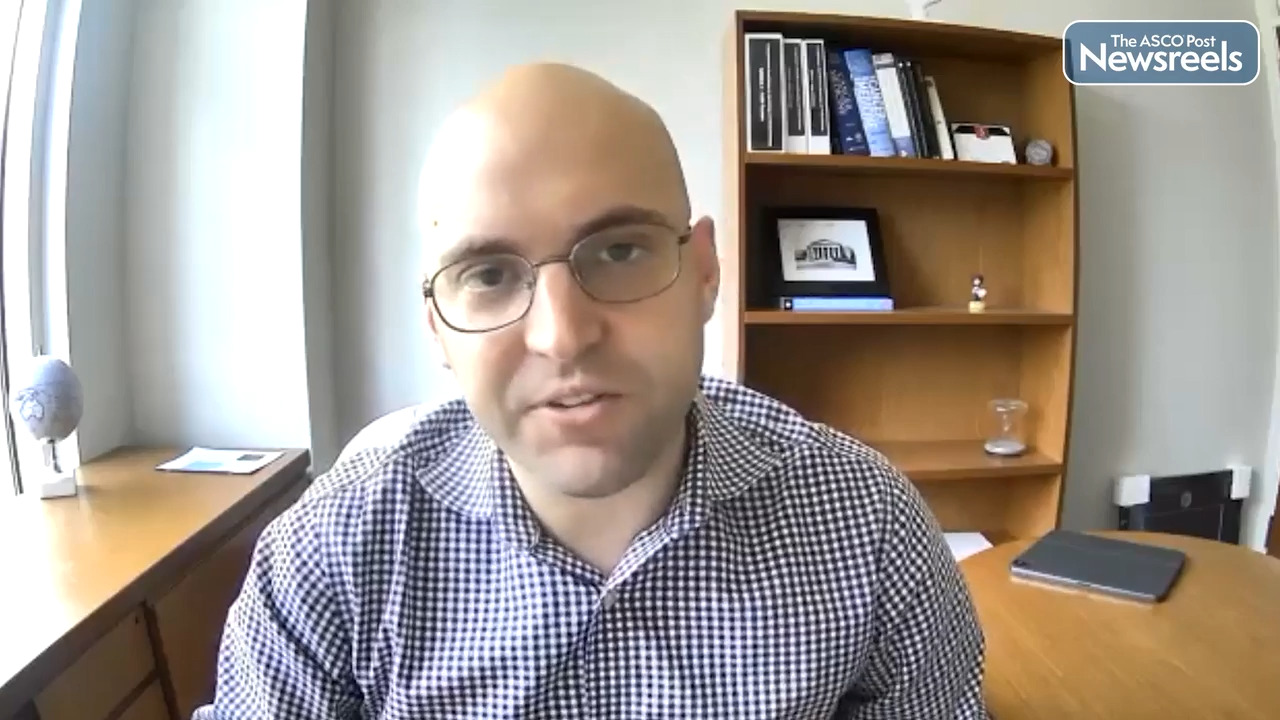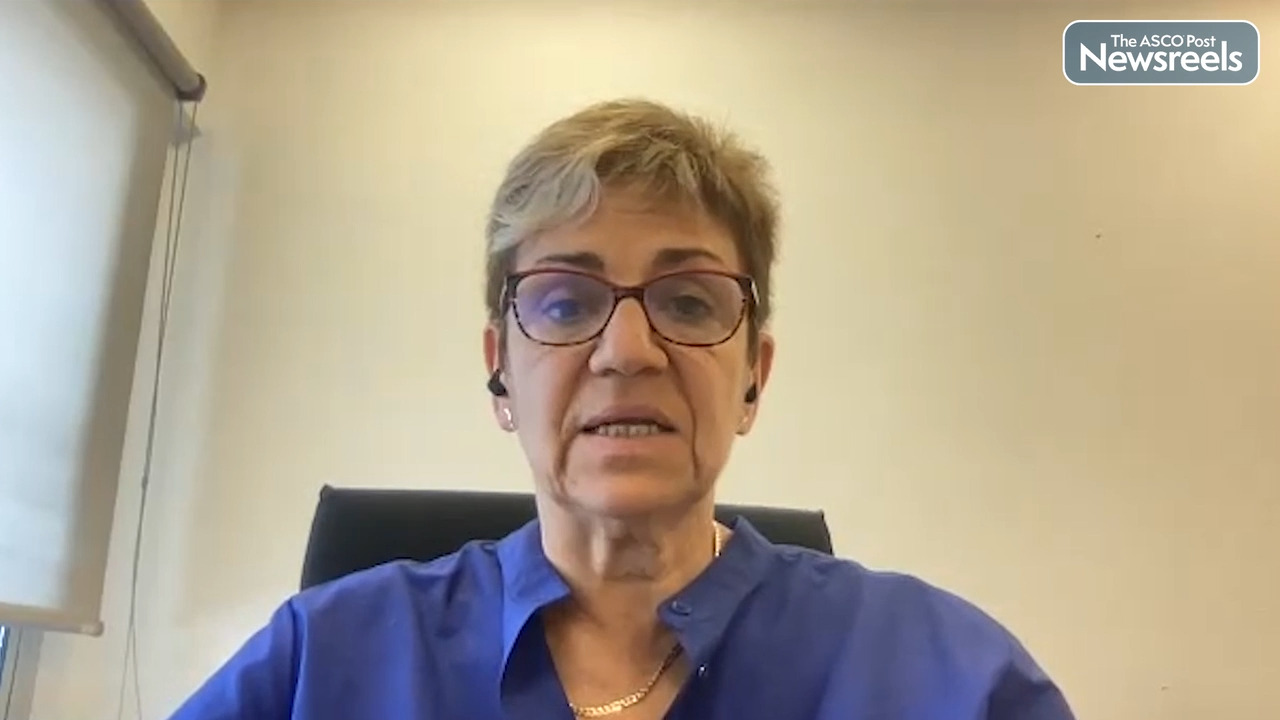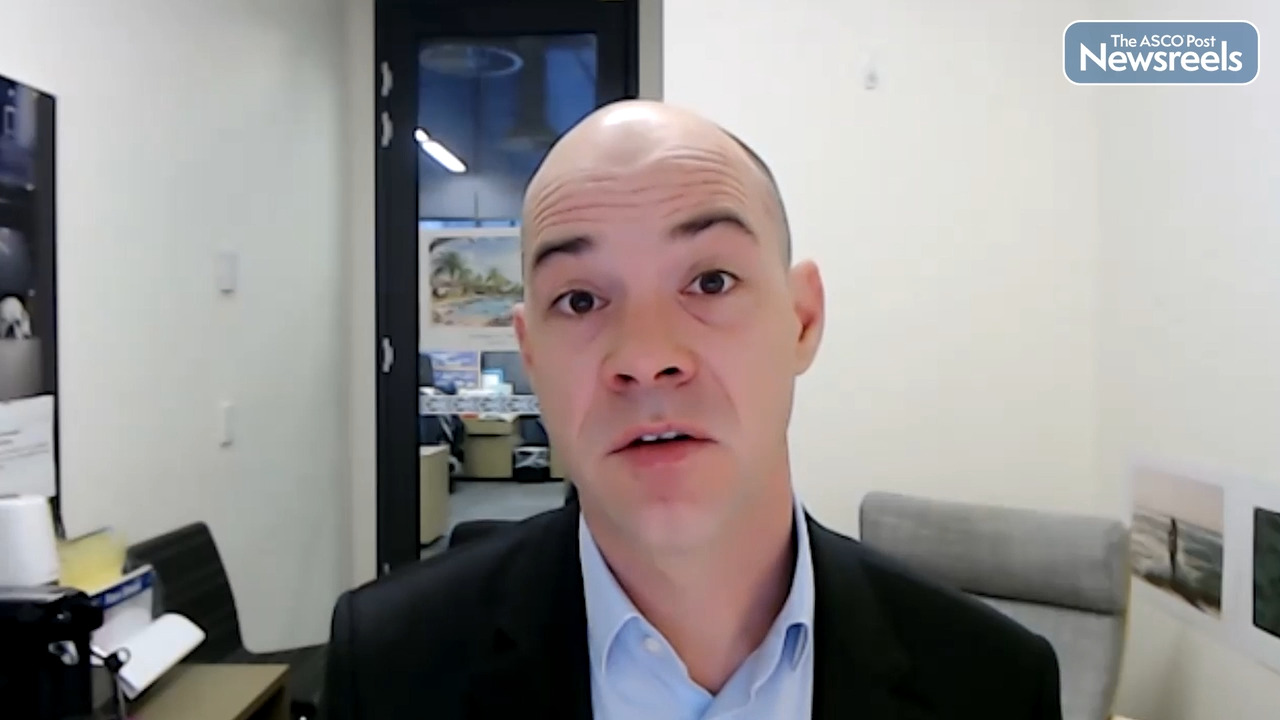Transcript
Disclaimer: This video transcript has not been proofread or edited and may contain errors.
The RATIFY trial established midostaurin, a first generation type one FLT3 inhibitor, in combination with standard induction and consolidation chemotherapy with maintenance as the standard of care for patients with FLT3 mutated, acute myeloid leukemia that had been previously untreated. However, there were some questions that remained following the RATIFY trial. For example, the RATIFY trial included patients with a FLT3 TKD mutation, as well as the ITD. And it is known that it is the ITD mutation associated with the worst prognosis, whereas the prognostic implication of the TKD is less clear. The RATIFY trial also only enrolled patients up to and including the age of 59. Patients did not continue midostaurin or placebo as a maintenance after stem cell transplant, and only continue maintenance with midostaurin or placebo for one year. And as mentioned, patients over the age of 60 were not included in the RATIFY trial. Quizartinib is a highly potent and selective second generation, but type two FLT3 inhibitor.
It is only active against the FLT3 ITD mutation. And it already proven clinical efficacy and a manageable safety profile in the QuANTUM-R study showing a benefit of quizartinib over standard chemotherapy for relapse refractory FLT3 ITD mutated AML. QuANTUM-First study was to evaluate the efficacy and safety of a specific FLT3 inhibitor in patients with AML and the FLT3 ITD mutation up to the age of 75 and up to three years of continuation therapy, including following an allogeneic stem cell transplant. Patients were randomized one to one to standard chemotherapy induction, idarubicin or daunorubicin with cytarabine in a three plus seven schedule with either quizartinib for two weeks following the chemotherapy or placebo. Patients achieving a complete remission or a complete remission with incomplete count recovery could go on to receive up to four cycles of high dose cytarabine consolidation dose adjusted based on age with two weeks of quizartinib or placebo.
If the physician and patient chose, they could undergo allogeneic stem cell transplantation as well. And then if they remained in remission, they underwent continuation therapy for three years with quizartinib or placebo. The primary endpoint of this clinical trial was overall survival. And this primary endpoint was reached with an improvement in the median overall survival from 15 months with placebo to 32 months with quizartinib, for a hazard ratio of 0.776 and a two-sided log ranked P value of 0.0324. This benefit was also seen in an exploratory sensitivity analysis after censoring for allogeneic stem cell transplant in all patients with a hazard ratio of 0.52. We also showed that patients who received quizartinib and either went onto an allogeneic stem cell transplant, or did not in first remission, also had a survival benefit in a post-hoc analysis. The CRC rate was higher with quizartinib, 71.6% ,versus 64.9%, with similar rates of complete remission of 55% in both arms. Notably, the duration of CR was three times longer with quizartinib, 39 months versus 12 months.
There was also an improvement in relapse-free survival. And the cumulative incidents of relapse at 24 months with quizartinib was only 31% versus 43% with placebo. Toxicities, treatment emergent adverse events, were similar in both arms. However, there were more treatment discontinuations, dose interruptions and dose reductions with quizartinib. Death within 30 days was 5.7% with quizartinib and 3.4% with placebo. The incidence of QTC prolongation greater than grade three, 500 milliseconds, was 2.3% with quizartinib and 0.7% with placebo. Therefore in this pivotal phase three trial, QuANTUM-First, quizartinib improved the overall survival when combined with standard induction consolidation therapy and continued for up to three years as a single agent in patients ages 18 to 75 with newly diagnosed FLT3 ITD positive AML.
And we believe this survival benefit is based on the improvement in relapse-free survival, a reduced cumulative incidence of relapse in longer duration of first remission. The safety profile of quizartinib with intensive chemotherapy and continuation was generally manageable with new safety signals. And we firmly believe that these data have the potential to change the standard of care for the treatment of adult patients with newly diagnosed FLT3 ITD positive AML. We are looking at the outcomes of patients following allogeneic stem cell transplant patient in this clinical trial. And this will be presented at ASH. Also, we collected MRD data using a highly sensitive FLT3 ITD PCR based assay. And this data will be presented at ASH as well.




